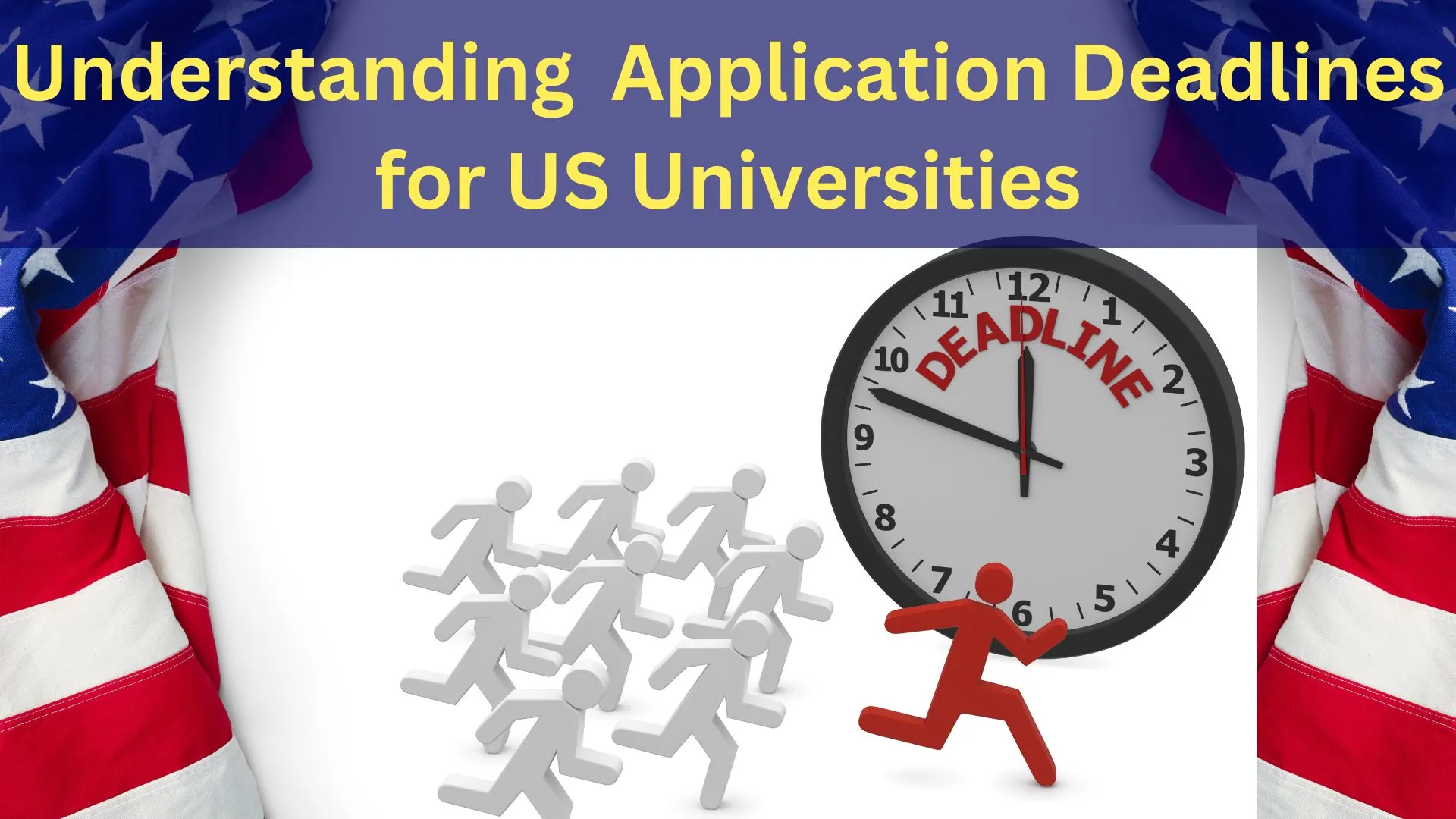Understanding Different Application Deadlines For US Universities

Embarking on the journey to pursue higher education in the United States is an exciting and life-changing endeavor. However, one of the most crucial aspects of this journey is understanding the myriad of application deadlines set by various universities across the country. Each institution may have its unique application deadlines for undergraduate admissions, making it essential for prospective students to be well-informed and prepared.
There are 6 types of deadlines in the US. These are:
1. Early Decision (ED)
2. Restrictive Early Action (REA)
3. Early Action (EA)
4. Regular Decision (RD)
5. University of California (UC’s)
6. Rolling Admissions
Early Decision (ED)
This option is for applicants who have a clear first-choice university. ED is a binding agreement, meaning that if you are accepted, you must enroll in that institution and withdraw all other applications.This can be advantageous for highly motivated students, as it demonstrates their commitment to a particular school.
Some examples of universities offering ED: UPenn, Cornell, Columbia, Dartmouth, UChicago, Brown, Boston University.
Deadlines
- The deadline for ED applications typically falls on 1st November.
- The decisions arrive by 15th December.
Restrictive Early Action (REA)
Restrictive Early Action (REA) is an admissions policy that allows students to apply early to a college or university and receive an early decision, but without the binding commitment associated with Early Decision (ED). There is a restriction while applying to universities in REA. You cannot apply to any other private college/university under their Early Action, Restrictive Early Action, Early Decision, or Early Notification plan.
You may not apply to any public university under an early binding plan, such as Early Decision. For example, if you are applying to Harvard in REA, you cannot apply to private universities like UChicago, USC in EA, however you can still apply to public Universities like UIUC, UMich, Georgia Tech in EA.
Some examples of universities offering REA are: Harvard, Princeton, Stanford, Caltech,Notre Dame, and Yale.
Deadlines
- The deadline to apply in REA is 1st November.
- The decisions come out by mid December.
Please note that you can apply to any one university either in ED or in REA.
Early Action (EA)
Unlike ED, EA is not binding. This non-binding option allows you to apply to multiple universities simultaneously, keeping your options open. You will have a higher admission chance since admissions officers read your application before the regular deadline.
Some universities that offer EA: Georgia Tech, USC, UIUC, Purdue, UMich, UMass, MIT, SUNY, Ohio State, Georgetown.
Deadline
Students applying through EA can submit applications early, usually by 1st November, and receive admissions decisions by mid January.
Regular Decision (RD)
Regular Decision is the most common application deadline for US universities.This deadline offers more flexibility as it doesn’t require the binding commitment of ED. You can apply to several universities, and once you receive all the admission offers, you can make an informed decision. Here you don’t have the same advantage as EA as your competition is with a bigger pool of applicants. If you are not sure about your predicted score or still need to work on your essays then you should definitely consider applying in Regular Decision.
All the universities offer RD.
Deadline
- RD deadlines usually fall between mid December to mid January.
- Admissions decisions communicated between February and March.
University of California (UCs)
UC or University of California comprises 9 campuses: Berkeley, Davis, Irvine, Los Angeles, Merced, Riverside, Santa Barbara, San Diego and Santa Cruz. UC’s are SAT blind which means that more weightage is given to grades, essays and extracurricular activities etc. This means that many students apply to UC, making the admission process highly competitive. UC’s do not offer financial aid to international students and limited scholarships are available. Please consider the financial requirements when applying to UC’s.
Deadlines
- UC deadlines usually fall on 30th November.
- Students receive their decisions by 15th March.
Rolling Admissions
Some universities offer rolling admissions, which means they accept and review applications as they are submitted, with decisions made throughout the admission cycle. In this case, it’s beneficial to apply early, as spots may fill up quickly. Rolling admissions can provide a sense of security, as you’ll receive an admission decision sooner, but it also means that it’s essential to complete your application as soon as possible.
Some universities that accept Rolling Admissions: Penn State,Tulane, Arizona State University and Purdue.
Tips for Managing Application Deadlines
Understanding the various application deadlines is essential, but equally important is managing them effectively. Here are some tips to help you stay on top of your application game:
1. Create a Deadline Calendar: Compile a comprehensive list of all the universities you intend to apply to, along with their respective deadlines. This will allow you to visualize your timeline and allocate your resources wisely.
2. Prioritize Early Deadlines: If you have a clear first-choice school or schools offering EA or ED options, prioritize these applications. Remember that ED is binding, so only choose this option if you are absolutely certain about your choice.
3. Plan Ahead: Start working on your application materials well in advance. This includes drafting essays, gathering recommendation letters, and ensuring your standardized test scores are up to par. Procrastination can lead to rushed applications, which may not reflect your true potential.
4. Seek Guidance: Don’t hesitate to seek advice from teachers, guidance counselors, or alumni who have experience with the application process. They can offer valuable insights and help you make informed decisions.
5. Stay Organized: Maintain a detailed record of all your application materials, including transcripts, test scores, essays, and recommendation letters. This will help you avoid last-minute confusion and ensure that everything is submitted correctly.
Just In Case You are Waitlisted
Being placed on a waitlist or being deferred means that the university has not immediately accepted or denied your application. Instead, they have placed you on a list of candidates who may be offered admission if spots become available. If you are waitlisted then:
- Consider writing a letter expressing your continued interest in attending the University. Share any new information that could strengthen your candidacy.
- Be sure to submit any relevant academic achievements or improvements as they occur.
- A letter from a teacher, counselor, or mentor that could significantly enhance your application, can be submitted.
- Any significant developments (since you submitted your application) such as notable academic achievements, awards, or leadership experiences, can be submitted.
Navigating the complex landscape of application deadlines for US universities is a critical part of the college admissions process. Understanding the types of deadlines, their significance, and strategies for managing them will empower you to make informed decisions and increase your chances of securing admission to your desired institutions.

 Previous Post
Previous Post
